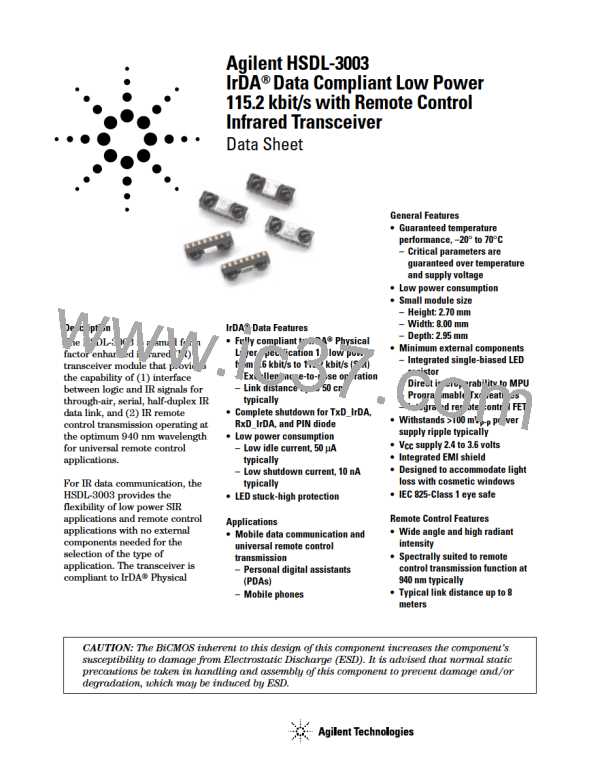Shape of the Window
upon the material chosen for the
window, the radius of the front
and back curves, and the distance
from the back surface to the
transceiver. Once these items are
known, a lens design can be
From an optics standpoint, the
window should be flat. This
ensures that the window will not
alter either the radiation pattern
of the LED, or the receive pattern
of the photodiode.
made which will eliminate the
effect of the front surface curve.
If the window must be curved for
mechanical or industrial design
reasons, place the same curve on
the back side of the window that
has an identical radius as the
front side. While this will not
completely eliminate the lens
effect of the front curved surface,
it will significantly reduce the
effects. The amount of change in
the radiation pattern is dependent
The following drawings show the
effects of a curved window on the
radiation pattern. In all cases,
the center thickness of the
window is 1.5 mm, the window is
made of polycarbonate plastic,
and the distance from the
transceiver to the back surface of
the window is 3 mm.
Flat Window
Curved Front and Back
Curved Front, Flat Back
(First choice)
(Second choice)
(Do not use)
20

 AGILENT [ AGILENT TECHNOLOGIES, LTD. ]
AGILENT [ AGILENT TECHNOLOGIES, LTD. ]